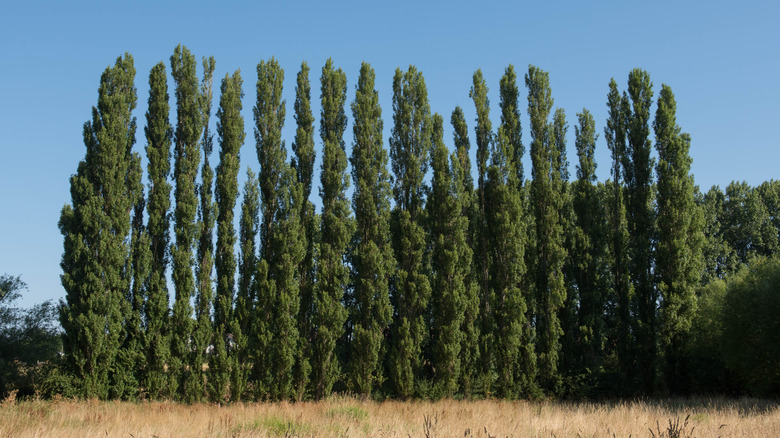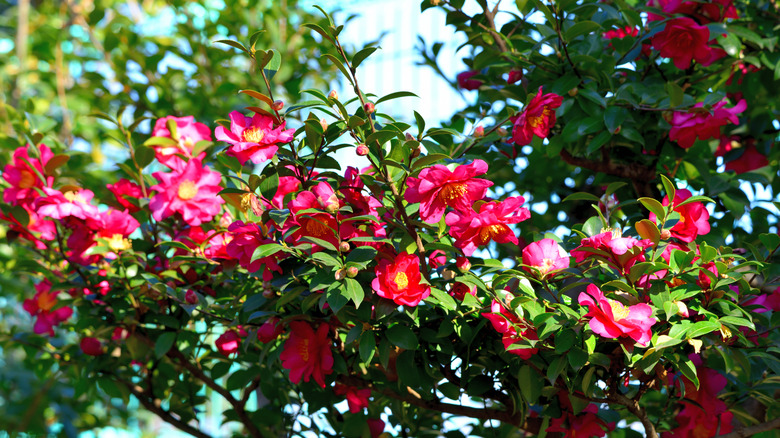Why You Should Reconsider Planting Lombardy Poplar Trees For Backyard Privacy
Tracing its parentage to the river banks of Italy's Lombardy region, the Lombardy poplar (Populus nigra) is the tree many homeowners default to when they want quick, fast-developing, living backyard privacy. Its unusually slender, columnar shape, upright branches, fall colors, and winter hardiness all advance its renown. Unfortunately, despite the benefits, Lombardy poplar trees make poor landscaping choices as they can be invasive. This assumes they get to live their golden years, as stem canker disease can kill a tree within 5 to 15 years.
Although black poplar trees don't produce seeds, you may notice that they send out young stems sprouting from the base of your tree (also known as suckers) and their roots as they mature — in fact, these shoots continue to form even after you cut down the non-native to a stump. These suckers are notorious for outcompeting any understory vegetation, especially native plants, earning the Lombardy poplar trees the moniker of a weed in Australia and South Africa. Worse, their shallow roots colonize areas two to three times the tree's height (they mature upwards of 40 to 50 feet). This implies a significant risk of the roots finding their way to and clogging underground drainage systems, lifting pavements and sidewalks, or fracturing walls if planted close to the foundation. Mowing your lawn might become arduous, too.
Native alternatives to Lombardy poplar trees
Given the risk of the Lombardy poplar trees turning on your desired plants and uprooting your driveway and foundation, it's best to pivot toward better options, especially native plants that add wildlife value by bringing birds to your yard. Zone 7 to 9 dwellers can consider planting the fragrant, broadleaf evergreen shrub Camellia sasanqua. Camellia can rapidly grow up to 14 feet high and half as wide. It blooms variegated pink flowers that play host to songbirds and pollinators. Thuja occidentalis 'Sunkist,' also called American arborvitae, is an excellent option for homeowners in zones 3 to 7. Another fast-growing, pyramidal-crowned tree, 'Sunkist' flourishes in neutral to alkaline soils in various lighting conditions, topping at 10 feet while measuring 8 feet across. It poses no litter or pollen issues, as is common with Lombardy poplar trees. Deer may cause trouble, though.
However, if your priority is to have a super tall, columnar tree for privacy, consider the Fastigiata cultivars. They generally fit the bill and are found among several species, including European hornbeam, English oak, and alder. For instance, the European hornbeam can grow almost 40 feet tall and 30 feet wide in zones 5 to 8. It tolerates urban pollution, drought, and poor drainage well and requires little pruning. Gaining almost 4 feet every year, the Leyland cypress is another option for sunny yards in zones 6 to 10 — it matures to nearly 50 feet.

